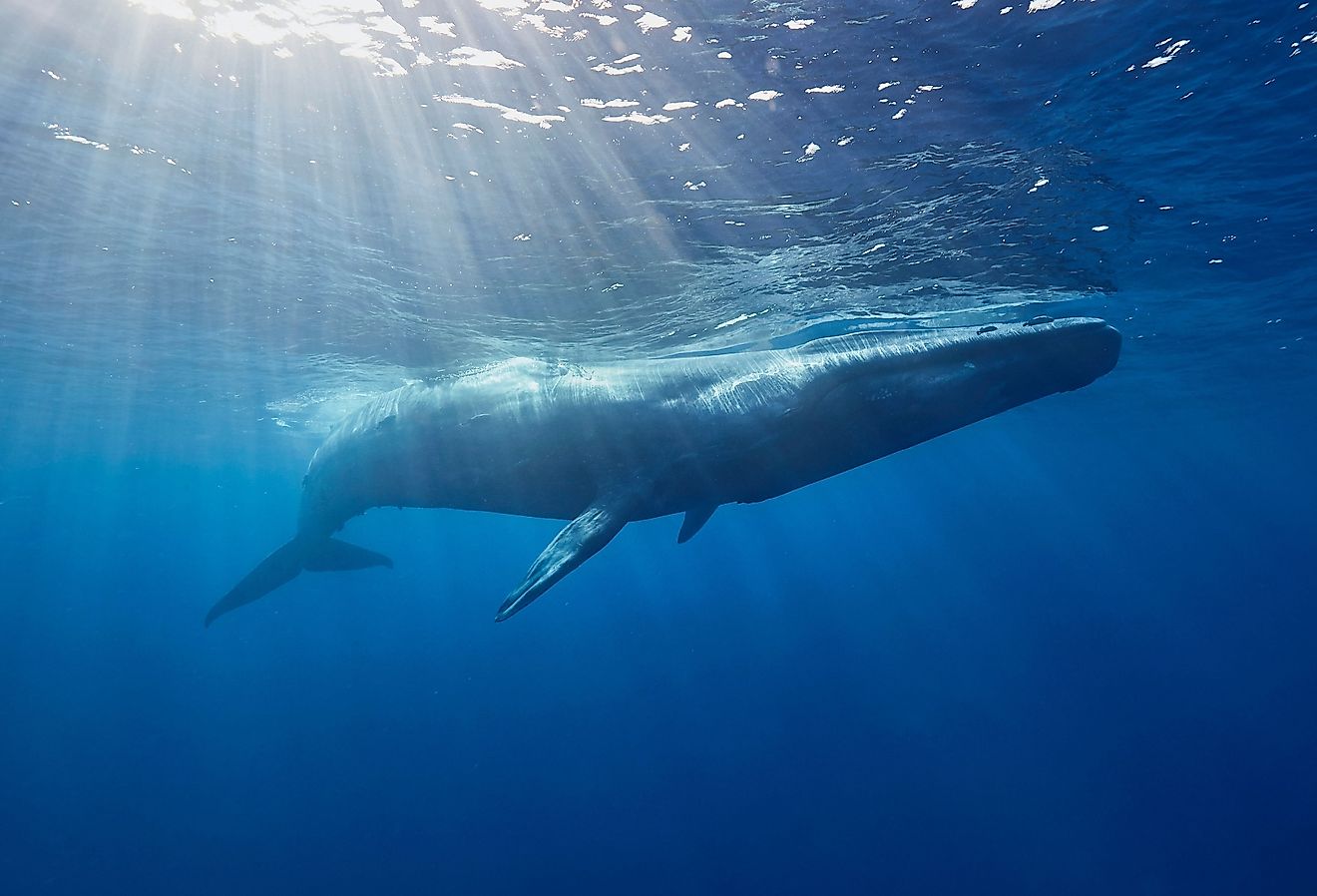
The 10 Driest Countries In The World
Many of the world's driest countries lie across the Sahara and Arabian Peninsula (Egypt, Libya, Saudi Arabia) and experience persistent subtropical highs, intense sunshine, and long, rainless summers. When rain does arrive, it is brief and irregular, tied to winter fronts or short monsoon pulses; intense downpours race through wadis, causing flash floods rather than recharge (as in Saudi Arabia and Jordan).
Flat terrain and distance from moist air suppress the uplift needed for clouds. Hot desert winds and interior plateaus, such as Saudi Arabia’s Najd, drive evaporation far beyond inputs.
Country averages also mask contrasts: Libya’s Jebel Akhdar and Egypt’s Mediterranean fringe get some winter showers, while vast interiors receive almost none. With few perennial rivers, states like Qatar, Bahrain, and the UAE rely on fossil aquifers, desalination, and demand management. Totals can swing with multi-year droughts and rare cyclones (e.g., Mekunu’s remnants), but the overall pattern holds.
In this article, we rank the world’s driest countries by average annual precipitation, showing how geography and atmospheric circulation limit rain.
The 10 Driest Countries in the World
| Rank | Country | Average Annual Precipitation (mm/yr) |
|---|---|---|
| 1 | Egypt | 18 |
| 2 | Libya | 56 |
| 3 | Saudi Arabia | 59 |
| 4 | Qatar | 74 |
| 5 | United Arab Emirates | 78 |
| 6 | Bahrain | 83 |
| 7 | Algeria | 89 |
| 8 | Mauritania | 92 |
| 9 | Jordan | 111 |
| 10 | Kuwait | 121 |
1. Egypt
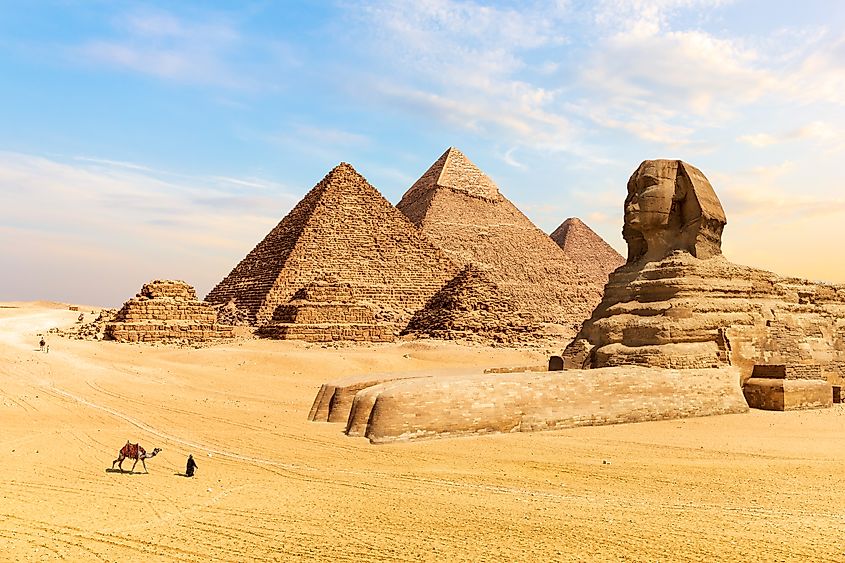
Egypt is among the world’s driest because most of its territory lies within the eastern Sahara, where a persistent subtropical high brings clear skies, intense sunshine, and virtually no rain. Precipitation is confined mainly to the Mediterranean coast in winter and is very light even there; inland cities such as Luxor and Aswan receive almost none year-round. Summers are long and extremely hot, with wide diurnal ranges and strong evaporation that outpaces scant moisture. Periodic Khamsin winds add hot, desiccating air and sandstorms. Along the Red Sea, the sea tempers little: humidity can rise but rainfall remains negligible, reinforcing aridity.
2. Libya
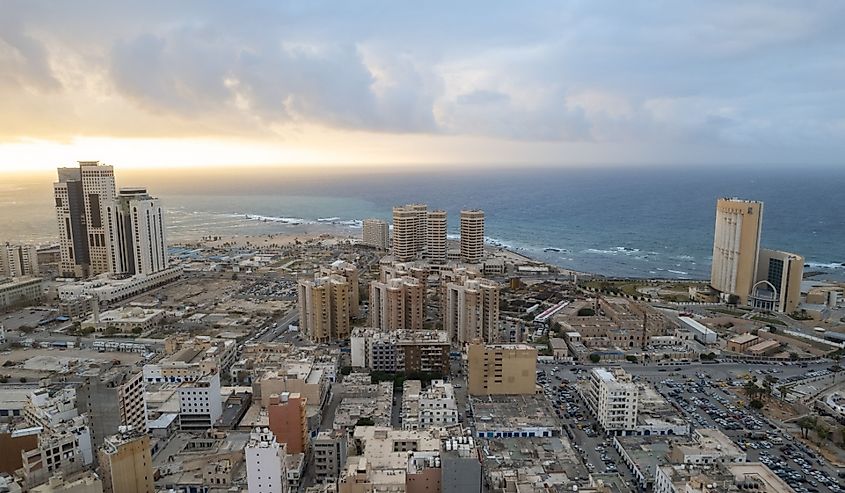
Libya is among the world’s driest because nearly all of it lies within the Sahara, where subtropical high pressure brings relentless sunshine and negligible rainfall. Precipitation is confined to a thin Mediterranean coast from October to April and is meagre even there, especially around the Gulf of Sidra, with frequent drought years. Inland, rain is sporadic or absent for years, leaving vast uninhabited deserts sustained only by oases. Summers are intensely hot (often 35-41°C, peaking near 48°C), boosting evaporation far beyond meagre inputs. The hot, desiccating Ghibli wind further dries soils and air, while brief showers rarely recharge moisture, cementing chronic aridity.
3. Saudi Arabia
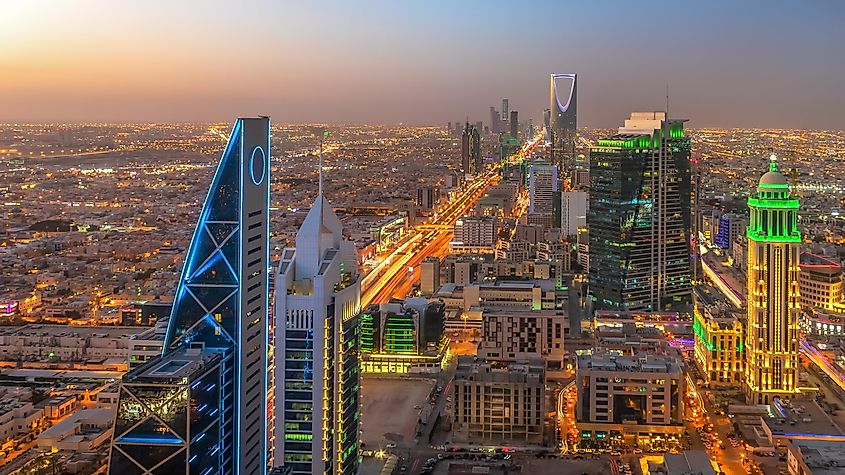
Saudi Arabia is among the world’s driest because a hot desert climate dominates everywhere, with sunshine and minimal maritime moderation. Annual rainfall is typically 50-150 mm and concentrated from November to April; vast interiors like Najd and the Rub’ al Khali receive even less, with years of complete dryness. Evaporation soars under extreme summer heat from May to September, far outpacing scant precipitation. There are no perennial rivers, only wadis that briefly flow after rare, sometimes violent, storms. Coastal zones are humid yet arid, while only the southwest mountains get more than 250 mm and occasional summer showers, an exception.
4. Qatar

Qatar is among the world’s driest because it has a flat, peninsular desert climate with relentless sunshine and scant rainfall, about 75 mm annually. Precipitation falls mainly December-April as brief, sporadic showers that often run off through wadis, offering little recharge and sometimes causing short-lived floods. Summers are extremely hot (often 42-43°C, peaking higher), driving evaporation that far exceeds inputs. A hot, dry southerly wind can strike year-round, especially in spring, spiking temperatures and raising dust and sandstorms, while the prevailing northwesterly brings humidity without rain. From May to October virtually no rain falls; winters are mild and mostly dry, reinforcing chronic aridity.
5. United Arab Emirates
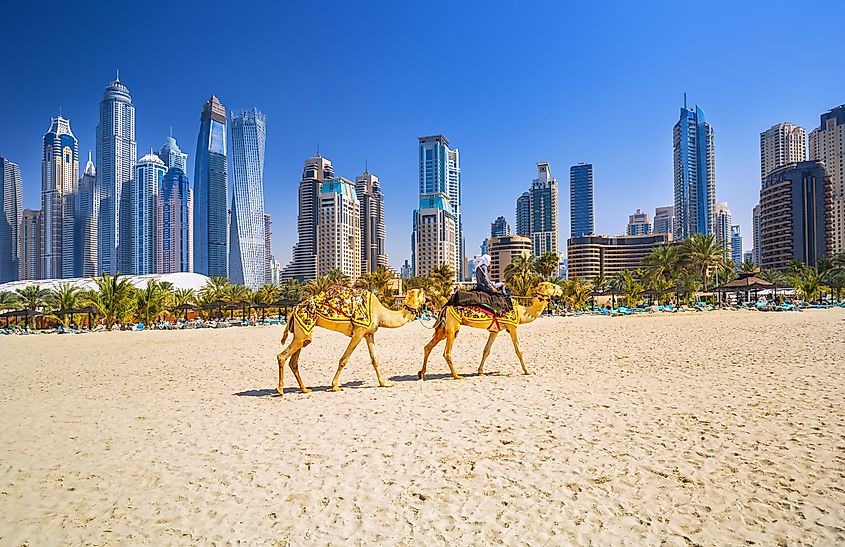
The United Arab Emirates is among the world’s driest because a desert climate dominates from shore to sand sea, delivering relentless sunshine and scant rain, usually under 100 mm annually, mostly in winter. Showers are rare but intense, running off quickly and causing brief flooding rather than replenishing water. Extreme heat from April-October fuels evaporation that dwarfs precipitation, while the humid Persian Gulf adds discomfort without adding rain. Inland, the Rub’ al Khali is hotter and drier, far from maritime influence; strong spring winds drive dust and sandstorms. Even the Al Hajar Mountains receive modest winter rainfall, leaving the country chronically arid.
6. Bahrain
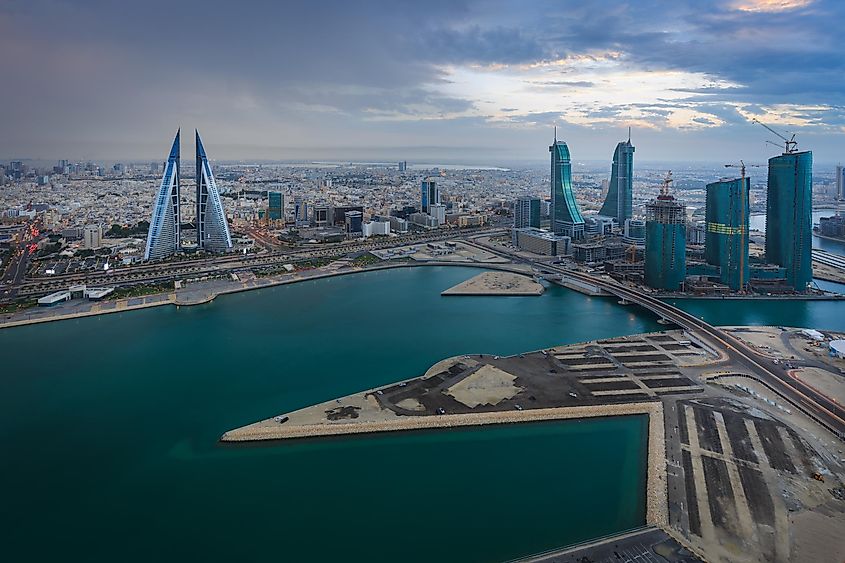
Bahrain is among the world’s driest because it has a flat, coastal desert climate with relentless sunshine, rare rainfall, and extreme heat that drives evaporation far beyond scant inputs. Annual precipitation averages about 85 mm in Manama and falls mainly November-April, often as brief, irregular downpours that produce flash floods rather than groundwater recharge. From May to mid-October, temperatures frequently reach 38-40°C (and higher in heatwaves), while humid Persian Gulf air adds stifling conditions without meaningful rain. Winds reinforce aridity: the moist northwesterly Shamal brings haze, and the hot, dry Qaws, common in spring, spikes temperatures and dust, further desiccating the archipelago.
7. Algeria

Algeria is among the world’s driest countries because most of its territory lies in the Sahara, where a desert climate dominates. Rain is extremely scarce, often below 100 mm a year and frequently under 50 mm, falling as brief downpours. Skies are almost always clear, maximizing sunshine and creating very large day-night temperature swings. Summer heat is often intense, with average highs around 40-46 °C in many oases and records near 50-51 °C; hot desert winds and sandstorms intensify aridity. Only a thin Mediterranean coast and northern mountains receive seasonal rain, leaving the vast interior, especially central-southern regions like In Salah, hot and dry.
8. Mauritania
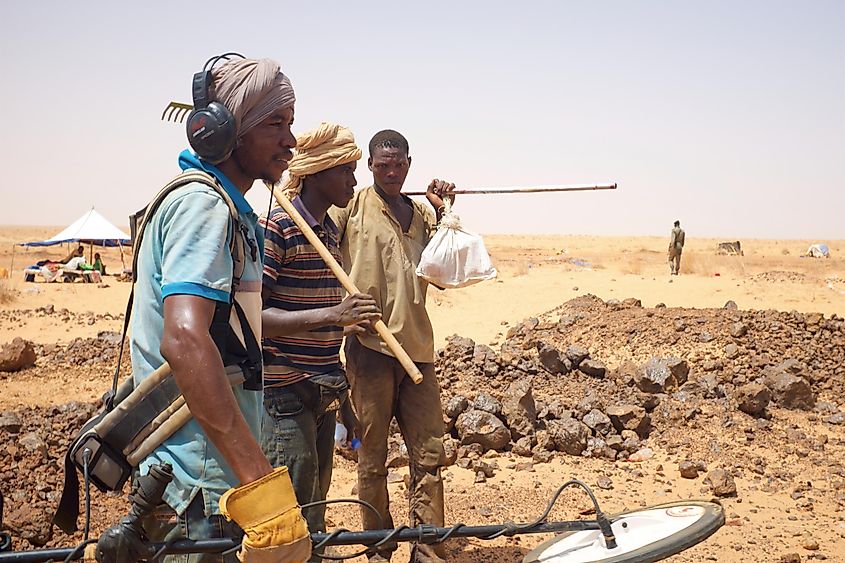
Mauritania ranks among the world’s driest because most of it sits in the Sahara’s western flank, where rain is rare to negligible. The north and interior are desert: sunshine dominates, sandstorms occur, and summer highs exceed 40-42°C, reaching 50°C in the northeast. The Atlantic coast also gets little precipitation; a cool current and sea breezes temper heat but bring fog, not rain (Nouadhibou under 30 mm annually). Farther south, the Sahel receives short, erratic and often highly variable monsoon showers July-September, with totals increasing toward the Senegal border, yet the monsoon’s reach remains very limited, keeping national rainfall chronically low.
9. Jordan

Jordan is exceptionally dry because its climate is predominantly subtropical arid to semi-arid. Rain falls mainly November-April, peaking in winter; summers are hot, sunny, and virtually rainless. Most regions, northeast, southeast, central plateau, Jordan Valley and especially the Dead Sea basin, receive less than 100 mm annually, with intense evaporation further reducing moisture. Only the north-west plateau sees 250-450 mm, yet still endures a long dry season from May to October. Hot desert winds from Egypt bring dust and sandstorms, not rain. Though altitude moderates temperatures in places, wadis remain dry most of the year, flooding briefly during occasional concentrated winter downpours.
10. Kuwait
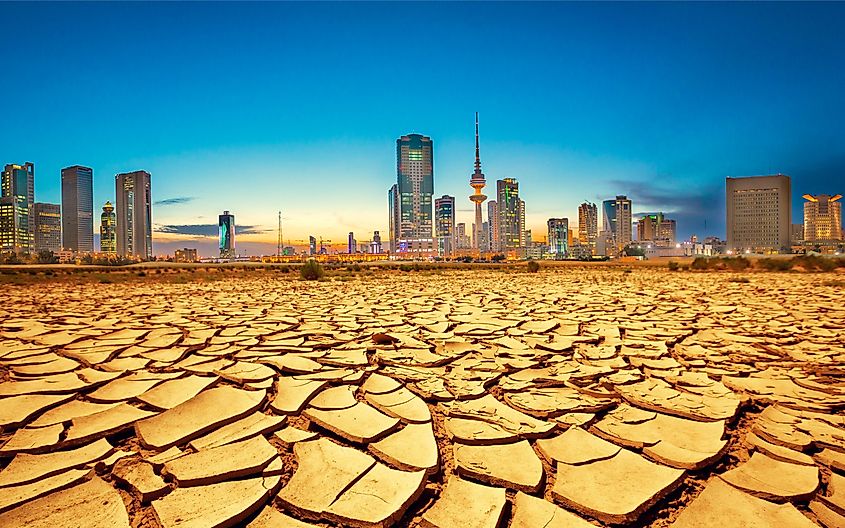
Kuwait is among the world’s driest because it has a subtropical desert climate with relentless sunshine, minimal maritime influence, and very little rain, just about 100-115 mm a year. Precipitation falls mainly November-April as rare, brief showers that can be intense yet short, offering little sustained moisture. Summers are extreme: daytime temperatures commonly reach 46-47°C with nights near 30°C. Winds from the Arabian interior drive hot, dry air and frequent sandstorms, while relative humidity often drops below 10%. Evaporation far exceeds rainfall, the sea moderates little, and Kuwait City ranks among the hottest capitals, reinforcing chronic aridity across the country year-round.
These ten countries illustrate a common hydrologic reality: persistent subtropical highs, flat terrain, and extreme heat suppress rainfall while turbocharging evaporation. Where storms do occur, brief downpours race through wadis, yielding floods rather than recharge. Limited perennial rivers and vast arid interiors push governments toward fossil aquifers, desalination, reuse, and tighter demand management. While year-to-year totals can swing with rare cyclones or multi-year droughts, the structural drivers of aridity endure, making long-term planning, resilient infrastructure, and efficient water governance non-negotiable today.



